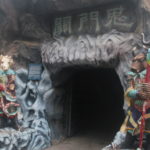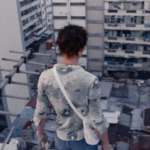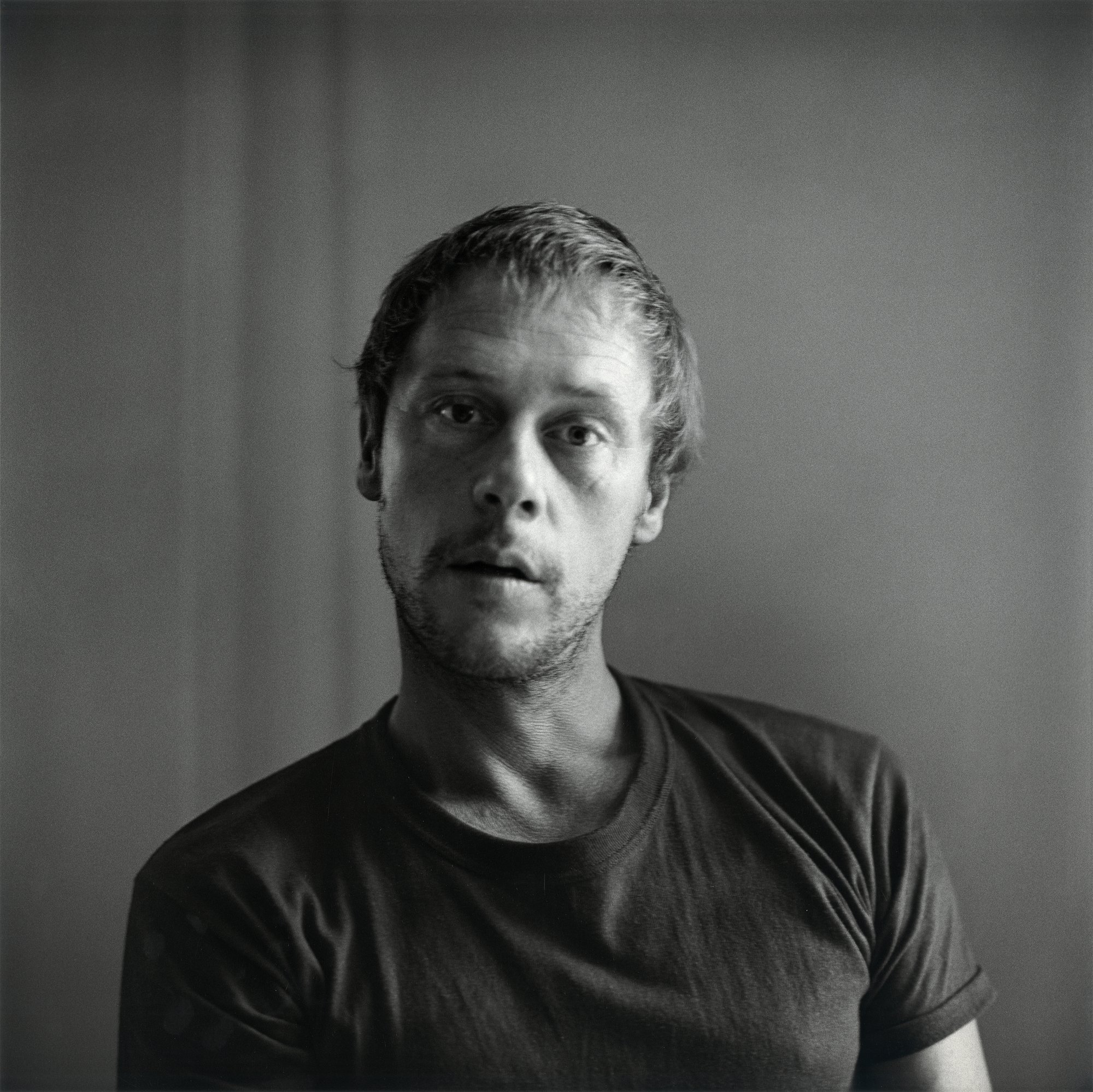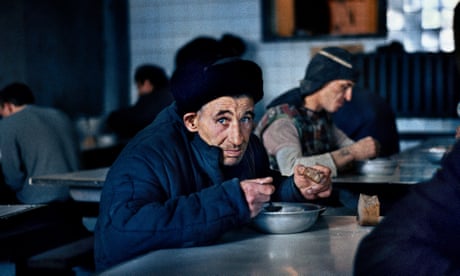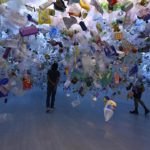Weather Forecast
2016 - Film & Video (Film & Video)
12:48 minutes
Guan Xiao
Mixed clips from her collection of thousands of images found online, the three-channel video Weather Forecast is an inquiry into the necessity of a physical movement (a travel) for our identity to transform or change. The question “Why can’t we view Europe from a chair?” periodically punctuates the video, suggesting that a similar personal transformation could occur by experiencing a place through the Internet and staying in the same place. Few episodes appear, each being a transformation process in itself, either by correlation, juxtaposition, combinations of specific matters such as iconography, texts, landscapes, events. Drawing a parallel between how identity transforms and how weather evolves over time, the video possibly hints to an escape from current political and geopolitical issues, and expressly on in the context of the refugee crisis and terrorism in Europe.
Guan Xiao is known for her videos composed primarily of found images and videos and her sculptures that explore the logic by which things relate to one another. Her practice addresses ideas of permanence, transformations, and perception Since the beginning of her practice, she began collecting material from various sources including YouTube, DVDs, home video libraries and other footage archives in addition to producing her own original content. Her sculptures often reference forms of the old—mimicking relic-like characteristics and totemic shapes—juxtaposed within a contemporary configuration. For example, The Documentary: Geocentric Puncture (2012) positioned fake artifacts against professional photography studio sets. In a similar way with her videos, Guan initiates a rereading of existing material by presenting a new visual language that is stripped of context and resists pre-conceived associations. Conceding equal importance to objects, people and phenomena, Guan Xiao’s videos often explore how our experience of browsing the Internet shapes our vision of the world and our own – always in transformation – identities.
Colors:
Related works sharing similar palette

© » KADIST
Martin Creed
2003This photograph of Martin Creed himself was used as the invitation card for a fundraising auction of works on paper at Christie’s South Kensington in support of Camden Arts Centre’s first year in a refurbished building in 2005...
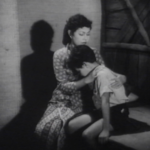
© » ARTS EQUATOR
Celebrating the monstrous other: "Anak Pontianak" and "Nobody" at LumiNation | ArtsEquator Thinking and Talking about Arts and Culture in Southeast Asia Articles Courtesy of The Filmic Eye August 5, 2019 By ila (1,100 words, 6-minute read) The year is 2049: two hundred years since the Pontianak first appeared in writing, marked insignificantly in Hikayat Abdullah as residues of superstitious and foolish beliefs of the Chinese and Malays that have persisted with time...

© » HYPERALLERGIC
Archaeologists Find Evidence of Hallucinogenic Drug in Ancient Rome Skip to content A bust of Emperor Trajan surrounded by black henbane seends and flowers and a femur discovered by archaeologists (edit Valentina Di Liscia/ Hyperallergic ) Two new archaeological finds suggest Roman subjects at the northern edge of the ancient empire used a hallucinogenic and poisonous plant called black henbane, the effects of which were described by Greek philosopher Plutarch as “not so properly called drunkenness” but rather “alienation of mind or madness.” Dutch zooarchaeologists Maaike Groot and Martijn van Haasteren and archaeobotanist Laura I...

© » KADIST
Elina Brotherus
A subject’s back stands before a landscape of mountains, arid and majestic, Der Wanderer 3 revisits the theme of man versus nature dear to Romantic painting and the paintings of Caspar David Friedrich in particular...

© » ARTS EQUATOR
Cakap-Cakap: Interview with Charlinda Pereira and Rebekah Sangeetha Dorai for subTITLED 1.0 | ArtsEquator Thinking and Talking about Arts and Culture in Southeast Asia Articles February 16, 2021 ArtsEquator chats with producer and production stage manager, Charlinda Pereira and actress, Rebekah Sangeetha Dorai about their upcoming work subTITLED 1.0 by Bridging The Gap (BTG)...

© » KADIST
Caroline Monnet, Mobilize A screening program followed by the artist in with conversation with Adam Piron, Assistant Curator for Film at LACMA Montreal-based artist Caroline Monnet explores Indigenous identity, bicultural living, and complex cultural histories through photography, sculpture, film, video, and installation...

© » KADIST
Hamra Abbas
2010At first glance, Cityscapes (2010) seems to be a collection of panoramic photographs of the city of Istanbul—the kind that are found on postcards in souvenir shops...

© » KADIST
Michel Auder
1981Talking Head is a short film in black and white of Auder’s daughter Alexandra, hidden behind a hemp plant, playing with a plastic wrapper and babbling in an imaginative way...

© » KADIST
Halil Altindere, Carlos Amorales, Alexandre Arrechea, Yael Bartana, Rodrigo Braga, Aslan Gaisumov, Igor Grubic, Jason Hendrik Hansma, Oded Hirsch, Binelde Hyrcan, Angelica Mesiti, Deimantas Narkevicius, Jakrawal Nilthamrong, Jun Nguyen-Hatsushiba, Enrique Ramírez, Chulayarnnon Siriphol, Finger Pointing Worker, Guan Xiao Munchhausen trilemma is a thought experiment used to demonstrate the impossibility of proving any truth...

© » KADIST
Pooja Gurung and Bibhusan Basnet
2018DADYAA: The Woodpeckers of Rotha by Pooja Gurung and Bibhusan Basnet illuminates a unique and seldom seen international perspective on indigenous cultures and contemporary social issues in the Nepali context...
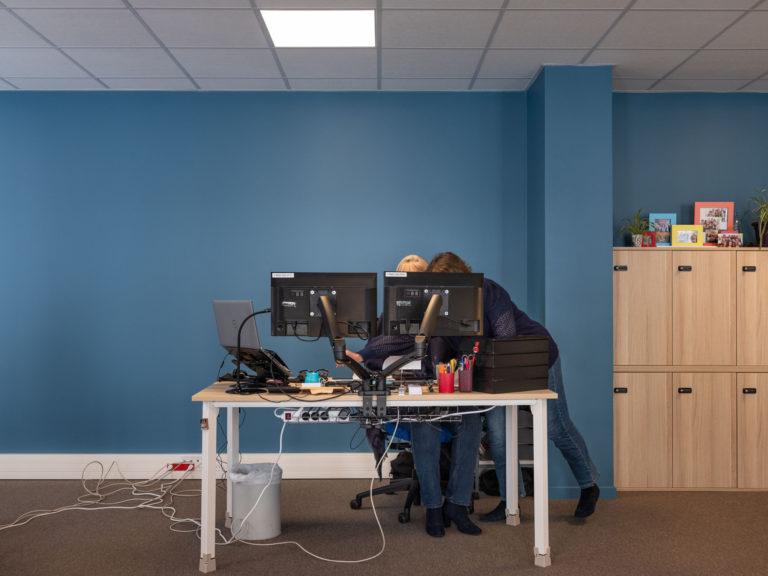
© » EYE OF PHOTOGRAPHY
© 2023 All rights reserved - The Eye of Photography Olivier Culmann, URSSAF Normandie, site du Havre @ Olivier Culmann Le Havre, Seine-Maritime, Normandie, France 10/05/2023 © Olivier Culmann / Tendance Floue @ Thomas Jorion @ Sidonie Van Den @ Isabelle Scotta @ Carlo Lombardi S From October 21st to January 7th, 2024, for its 14th edition, 25 international photographers, both established and emerging, can be discovered in an open-air exhibition tour throughout the city, on the beach, and indoors at Point de Vue and Les Franciscaines...




